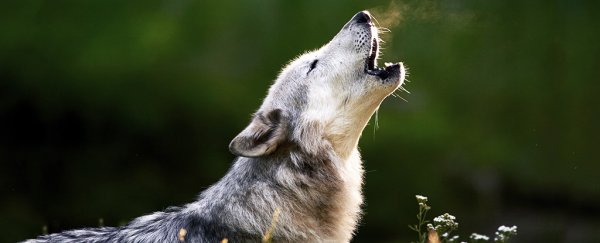A cluster of ancient canine fossils from a single cave in southwestern Germany has shown astounding genetic diversity, encompassing nearly the entire breadth of dog domestication: from wild wolf to modern hound.
According to researchers, the age of these remarkable specimens, which include dogs, wolves and foxes, is older than nearly 60 other ancient canines that lived between 14,000 and 3,000 years ago in Europe.
What's more, a reconstruction of their mitochondrial genomes appears to match the collective variation of almost all ancient canines analysed from this region to date.
The small cave, known as Gnirshöhle, is at the heart of the Hegau Jura region, which is home to numerous caverns that were occupied by humans roughly 17,000 to 12,000 years ago. It is known as a "Magdalenian hotspot", referring to the ancient western European cultures of the time.
Studying the morphology, genetics and isotopes of several of these Gnirshöhle bones, researchers have pulled back the curtain on a potential stage for animal domestication - one of the most comprehensive collections of canine genomes in both time and space.
"Intriguingly, a recent study focusing on the analysis of nuclear genomes of various ancient dogs suggested a single origin of modern dogs, but it failed to provide a geographic location for such an event," the team writes in their new study.
"While we cannot address the question of the domestication event's singularity, our results support the hypothesis that the Hegau Jura was a potential center of early European wolf domestication."
Dogs are generally considered the oldest domesticated animal in human history, but the precise detail on where, when, and why this happened is still unknown. Some recent genetic studies suggest dogs were domesticated around the same time in both Europe and Asia, before mixing later on. Later genomic analyses disagree, pointing to a single origin in Europe.
The current research is unable to end this debate, but the genetic diversity discovered in southwestern Germany does suggest the early humans who live there tamed and reared animals from various wolf lineages.
Comparing the dog and wolf haplotypes, the authors have been able to figure out a date for their last common ancestor, roughly 135,000 years ago in the late Pleistocene.
This date does not mean this is when wolf and dog populations split, the authors note, "nor does it represent the actual onset of domestication."
But it does give us an upper limit for such events.
The oldest undisputed dog fossil dates back to about 14,000 years ago, with other, more controversial remains possibly pushing 30,000 years.
Telling the difference between the earliest domesticated dogs and their wolf counterparts is incredibly difficult and somewhat subjective, especially since this transition happened in very gradual stages. Generally, however, it's accepted that the first dogs emerged about 16,000 years ago in Europe and Siberia.
The new findings largely support these dates, at least in Europe.
"The closeness of these animals to humans and the indications of a rather restricted diet suggest that between 16,000 and 14,000 years ago, wolves had already been domesticated and were kept as dogs," says biogeologist Chris Baumann from the University of Tübingen in Germany.
"One origin of the European domestic dogs could thus be found in southwestern Germany."
But that doesn't rule out other locations where dogs were independently domesticated from grey wolves.
In fact, the genomes of the Gnirshöhle canids have introduced a previously unrecognised lineage that doesn't match other dogs found in the region. It's therefore possible this lineage could represent expanding dog populations from elsewhere in the world, maybe even Asia.
For now, that's still conjecture. Neither the genetics nor the teeth of the Gnirshöhle remains were sufficient to determine if these canids were dogs, wolves, or some in-between.
Interestingly, however, their diets appeared to be low in protein, which suggests these animals had somewhat adapted to more restricted meals than they would get in the wild, "possibly under human influence."
"Thus, we consider the Gnirshöhle canids to likely represent an early phase in wolf domestication - facilitated by humans actively providing a food resource for those early domesticates," the study authors suggest.
"Moreover, the high mitochondrial genome diversity could be explained by the fact that Magdalenian people would have arbitrarily drawn individuals from a large pool of canid genetic variation in the region some 15,000 years ago."
The study was published in Scientific Reports.
